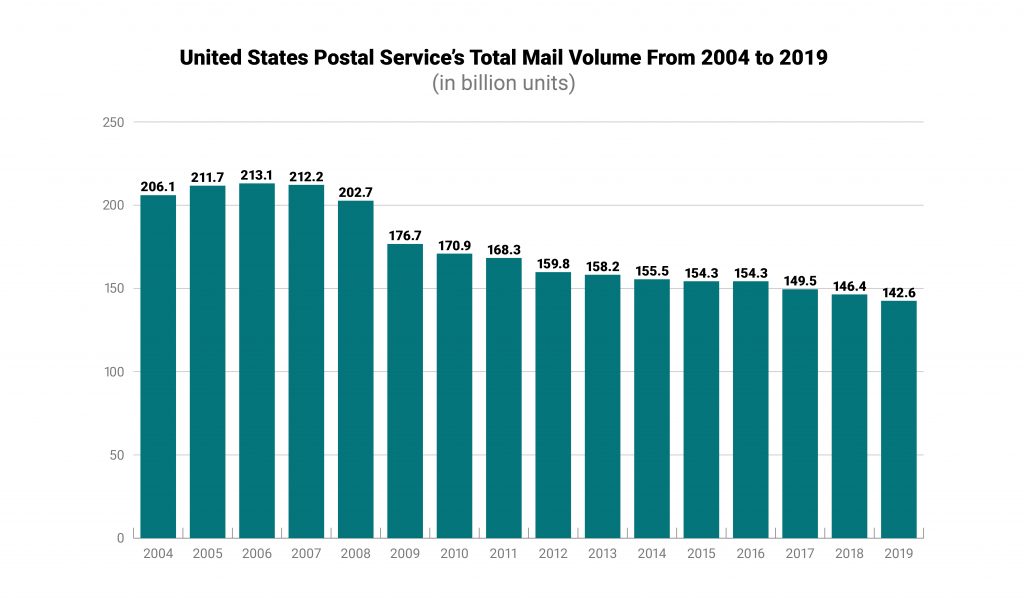After peaking at just over 213 billion mailed units in 2006, USPS has since seen a year-over-year decline in mail volume. As of last year, their mailed volume has dropped by 33 percent to 142.57 billion units. Long gone are the days of physical mailboxes being overstuffed with marketing materials. But those materials haven’t disappeared, they’ve just found their way to our digital inboxes.

According to Harvard Business Review, “On average, professionals have more than 200 emails in their inbox and receive 120 new ones each day but respond to only 25% of them.” For the rest of the world, there were over 293 billion emails sent every day in 2019, that’s 80 billion more pieces of content than the peak USPS number of mailed units in 2006. With email filters becoming more sophisticated, marketing emails risk being redirected to spam or “promotions” folders and never even reaching their intended audience. So, although we’re spending more time than ever online, it’s now our inboxes that are bursting while physical mailboxes are open.
This means that both B2C and B2B marketers now have an opportunity to reach consumers and get their message read via direct mail. Marketers can make an impact and generate strong response rates and a positive ROI with a printed piece to accompany and support their marketing plan.
Direct Mail Breaks Through the Media Clutter
Direct mail response rate ranges from about five to nine times greater than any other digital direct marketing medium, including email and social media. In 2018, the direct mail response rate was 4.9% for prospect lists in 2018, which is significantly higher than in 2017 and the highest since the report started in 2003. Marketing Sherpa reports that 76% of consumers trust direct mail when they want to make a purchase decision. In fact, consumers trust traditional advertising channels more than digital channels when making a purchase.

Direct Mail Influences Purchase
It might be a surprise to see that a whopping 57% of Millennial consumers say that they have made purchases based on direct mail offers and 87% report enjoying receiving direct mail (USPS 2018). For Baby Boomers, direct mail is the top purchase influencer, beating recommendations from friends and family. 62% of people are always addressable—they own and use at least three web-connected devices, go online multiple times per day, and go online from multiple physical locations. By putting a physical mail piece in front of your customers as part of your marketing plan, you give them a chance to learn more information about your brand, pushing them toward your website on any one of those devices, or to your retail location, and ideally a purchase.
Direct Mail Has a Long Shelf Life
With 36% of people under 30 looking forward to checking the mail each day, there is an opportunity to offer a new marketing item distinct from those cluttered inboxes. A unique advantage of direct mail is that it can be easily shared among the household and be kept top of mind while posted on the fridge or in other communal spaces. Direct mail that is designed with this in mind will be eye-catching and can influence purchase behavior. Coupons and offers are more memorable when they are physically in front of consumers and Target Marketing reports that 66% of consumers are more likely to remember to use a voucher or code if they have a physical copy on hand.
Direct mail delivers proven results and we’re here to find the right solution for you. For more on direct mail and its value, check out How to Get Back to Basics with Direct Mail.